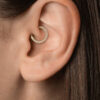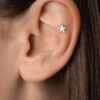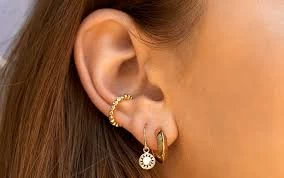People refer to navel piercing as belly mark,a popular form of body piercing. During this procedure, the piercer pierces the navel and inserts jewelry, such as a barbell or captive bead ring. In recent years, navel has gained fame and now serves as a fashion statement for many.
The History of Navel Piercing
The ancient Sumerians in Mesopotamia practiced navel piercing over 5,000 years ago, marking its first evidence. Ancient Egyptians also widely adopted navel piercing and linked it to ability and female. In the 19th century, Indian women embraced navel piercing as a symbol of beauty and sensuality. Throughout history, various cultures have embraced navel piercing.
The Proess of Navel Piercing
A piercing studio or tattoo shop offers the simple process of getting a navel piercing. The person lies down on their back and the piercer thoroughly cleans the area. The piercer then marks the piercing spot and checks for any medical conditions that may hinder healing.
The piercer uses a sterilized needle to make the hole and inserts jewelry. The piercing may cause slight pain, but it quickly fades. After the procedure, the piercer cleans the area and gives instructions for proper aftercare to prevent infection.
Caring for a Navel Piercing
Caring for a navel piercing is an important part of the healing process. Here are some tips for caring for a navel piercing:
- Clean the piercing regularly: Clean the piercing twice a day with a saline solution or a mild soap. Avoid using alcohol or hydrogen peroxide as they can irritate the skin.
- Avoid touching the piercing: Touching the piercing with dirty hands can introduce germs into the piercing and increase the risk of infection.
- Wear loose clothing: Tight clothing can rub against the piercing and cause upset.
- Avoid swimming: Chlorine and other chemicals in swimming pools can upset the piercing and slow down the healing process.
- Don’t remove the jewelry: Removing the jewelry can cause the hole to close up, and the piercing will have to be redone.
Potential Risks and Complications of Navel Piercing
Like any form of body piercing, navel piercing can be related with certain risks and complications. Some of the most common risks and complications include:
- Infection: The most common risk associated with navel piercing is infection. Infection can cause redness, swelling, and pain around the piercing.
- adverse reactions: Some people may experience an allergic reaction to the metal in the jewelry. This can cause itching, redness, and swelling around the piercing.
- Rejection: In some cases, the body may reject the piercing, causing the hole to close up.




























